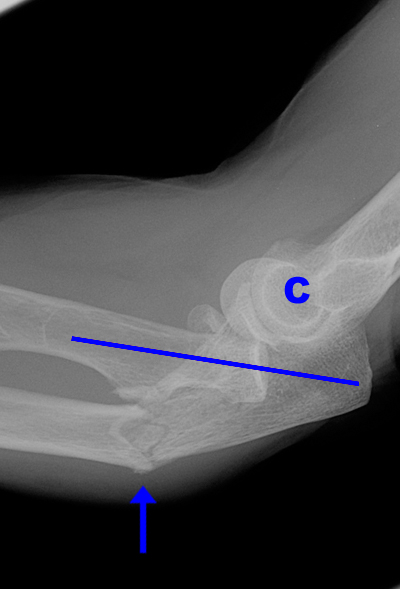Forearm Case 2 History/Physical Exam
Monteggia Fracture
History and Physical Exam
The typical mechanism is a fall onto an outstretched arm with the elbow fully extended and the hand maximally pronated. Cases after direct trauma to the proximal ulna (similar to nightstick fracture) have been reported, as well as high-energy mechanisms such as MVCs. The patient will usually complain of pain in the proximal forearm and painful limited elbow range of motion.
On physical exam, there is often obvious deformity or even shortening of the affected forearm. The dislocated radial head is sometimes palpable in the antecubital fossa. A complete neurovascular exam is important since radial nerve deficits are common (up to 17%). This is usually a posterior interosseous nerve deficit, which manifests as weakness in finger extension with intact sensation.
